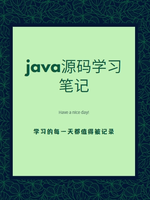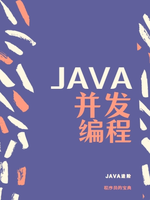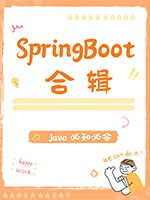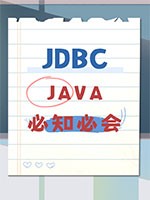29 | 消息驱动:如何集成 Spring Cloud Stream 实现消息驱动
在现代微服务架构中,消息驱动的设计模式因其高可扩展性、松耦合和容错性而备受青睐。Spring Cloud Stream 作为 Spring Cloud 生态中的一员,提供了对消息中间件的抽象层,使得开发者能够以声明式的方式与多种消息系统(如 RabbitMQ、Kafka 等)进行交互。本章节将深入探讨如何在 Spring Cloud 微服务项目中集成 Spring Cloud Stream 来实现消息驱动的应用架构。
29.1 消息驱动架构概述
消息驱动架构(Message-Driven Architecture, MDA) 是一种通过消息传递机制在不同服务或组件间进行通信的软件设计模式。在这种架构中,服务不直接调用彼此,而是通过发布(Publish)消息到消息队列或主题,并由订阅(Subscribe)这些消息的服务异步处理。这种方式不仅降低了服务间的耦合度,还提高了系统的可扩展性和容错性。
29.2 Spring Cloud Stream 简介
Spring Cloud Stream 是一个构建消息驱动微服务的框架,它构建在 Spring Integration 项目之上,旨在提供一种简单的方式来构建高度可扩展的事件驱动微服务。Spring Cloud Stream 抽象了消息中间件的概念,允许开发者通过定义绑定接口(Bindings)和消息通道(Channels)来与底层消息系统交互,而无需深入了解具体的消息中间件实现细节。
29.3 集成 Spring Cloud Stream 的步骤
29.3.1 引入依赖
首先,在项目的 pom.xml 文件中添加 Spring Cloud Stream 的依赖以及所选消息中间件的绑定器(Binder)依赖。以 Kafka 为例:
<dependency><groupId>org.springframework.cloud</groupId><artifactId>spring-cloud-starter-stream-kafka</artifactId></dependency><dependencyManagement><dependencies><dependency><groupId>org.springframework.cloud</groupId><artifactId>spring-cloud-dependencies</artifactId><version>${spring-cloud.version}</version><type>pom</type><scope>import</scope></dependency></dependencies></dependencyManagement>
确保替换 ${spring-cloud.version} 为实际使用的 Spring Cloud 版本。
29.3.2 配置消息通道
在 Spring Cloud Stream 中,消息通道是连接消息源(Source)和消息处理器(Processor)的桥梁。你可以通过定义接口并使用 @EnableBinding 注解来声明这些通道。
import org.springframework.cloud.stream.annotation.EnableBinding;import org.springframework.cloud.stream.messaging.Sink;import org.springframework.cloud.stream.messaging.Source;@EnableBinding({Source.class, Sink.class})public class MyStreamConfig {// 这里可以定义更多的接口和方法来定制消息通道}
在实际应用中,通常会根据需要定义自定义的通道接口。
29.3.3 编写消息生产者
消息生产者负责向消息通道发送消息。在 Spring Cloud Stream 中,你可以通过注入 MessageChannel 并使用其 send 方法来发送消息。
import org.springframework.beans.factory.annotation.Autowired;import org.springframework.cloud.stream.messaging.Source;import org.springframework.messaging.Message;import org.springframework.messaging.support.MessageBuilder;@Servicepublic class MyMessageProducer {@Autowiredprivate Source source;public void sendMessage(String data) {Message<String> message = MessageBuilder.withPayload(data).build();source.output().send(message);}}
29.3.4 编写消息消费者
消息消费者监听并处理来自消息通道的消息。在 Spring Cloud Stream 中,你可以通过 @StreamListener 注解来标记一个方法作为消息处理器。
import org.springframework.cloud.stream.annotation.StreamListener;@Servicepublic class MyMessageConsumer {@StreamListener(Sink.INPUT)public void processMessage(String data) {// 处理消息的逻辑System.out.println("Received message: " + data);}}
29.3.5 配置消息中间件
在 application.yml 或 application.properties 文件中配置消息中间件的连接信息和通道绑定细节。
spring:cloud:stream:bindings:output:destination: myTopiccontentType: application/jsoninput:destination: myTopicgroup: myGroupcontentType: application/jsonkafka:binder:brokers: localhost:9092
29.4 消息驱动模式的应用场景
- 解耦服务:通过消息队列消息的,服务之间的直接调用被替换为基于异步通信,从而降低了服务间的耦合度。
- 负载均衡与容错:消息队列可以作为缓冲层,平滑处理服务请求的高峰,同时支持消息的持久化,增强系统的容错能力。
- 事件驱动架构:在事件驱动架构中,服务之间通过发布和订阅事件来通信,Spring Cloud Stream 提供了实现这一架构模式的强大支持。
- 分布式事务:虽然 Spring Cloud Stream 本身不直接处理分布式事务,但它可以与支持事务的消息中间件结合使用,实现跨多个服务的可靠事务处理。
29.5 高级特性与最佳实践
- 分区与并行处理:Spring Cloud Stream 支持消息分区和并行消费,这有助于提高消息处理的吞吐量和可靠性。
- 消息过滤与转换:通过 Spring Integration 的强大功能,可以轻松地实现消息的过滤、转换和路由。
- 错误处理:合理设计错误处理机制,如重试、死信队列等,确保消息处理过程中的健壮性。
- 性能优化:根据具体场景调整消息中间件和 Spring Cloud Stream 的配置,如批处理大小、消费者线程数等,以优化系统性能。
29.6 总结
通过集成 Spring Cloud Stream,我们可以在 Spring Cloud 微服务项目中实现高效、灵活的消息驱动架构。从引入依赖、配置消息通道到编写生产者和消费者,每一步都遵循了 Spring Cloud Stream 的设计哲学,即简化消息中间件的使用,让开发者能够专注于业务逻辑的实现。同时,通过合理利用消息驱动模式的高级特性和最佳实践,我们可以进一步提升微服务架构的可靠性、可扩展性和可维护性。









